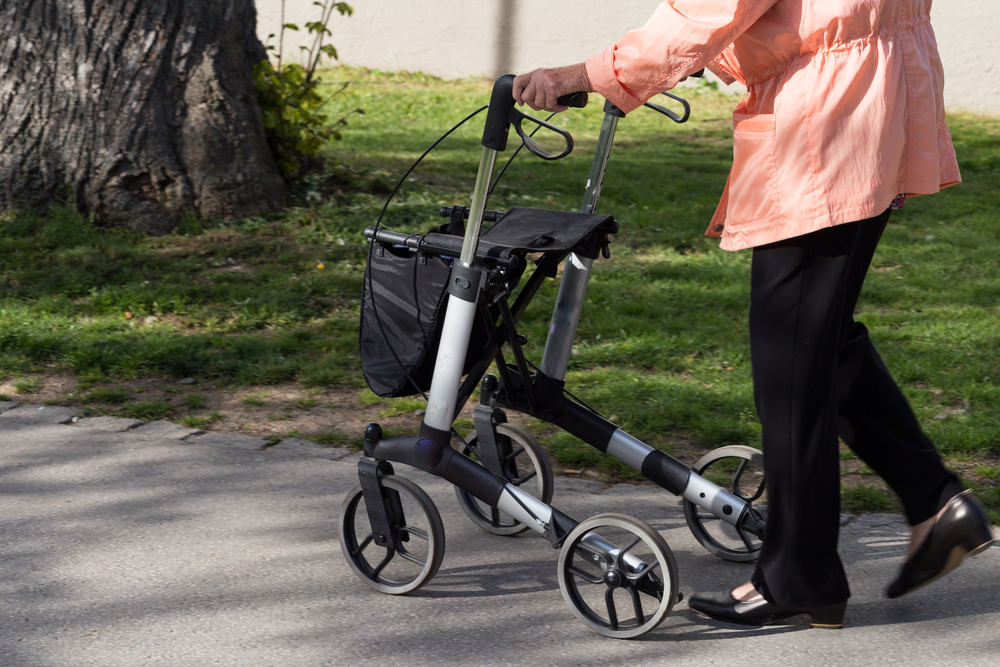Becoming Dependent Restored My Independence

One of the scariest life changes a patient anticipates upon receiving a diagnosis of Friedreich’s ataxia is the use of a walking aid.
For me, the thought of needing a device to get around in my day-to-day activities was soul crushing. I thought that it signified the end of my life as a “normal” and healthy person.
I knew I needed a walker when my falls became more frequent and out of control. At the beginning of my FA-related balance symptoms, my “falls” were more like stumbles or bumping into things. I would find random bruises on my body, but that was about it.
Then, with my falls, I started ending up on the floor, usually with a minor injury such as a tweaked knee, a jammed thumb, or a sore shoulder. Then I had the BIG fall, the one in which I obliterated my ankle, requiring two metal plates, 13 screws, and eight weeks in a wheelchair.
While using the walker during my recovery, I became extremely frustrated. Walking was incredibly difficult, even with the walker. It didn’t feel like an “aid.” It felt like something I was just pushing around while I continued to struggle.
Connect with other people and share tips on how to manage FA in our forums!
My physical therapist spoke wisdom that affected my life during my recovery. She told me, “You have FA. Walking will be hard for you no matter what, with or without the walker. The walker won’t make walking easier, but it will make your walking safer. Think of it as fall prevention instead of a walking aid.”
Despite my stubborn fear of “becoming dependent” on my walker, I decided to start using it all the time. My friends in the FA community told me that I would come to appreciate the walker for the freedom, safety, and independence it provided. That seemed so backward to me. How would becoming dependent on an assistive device give me independence?
A couple of months later, I now see what they mean.
Before I started using my walker in public, I would find myself waiting for someone to lend me an arm or to bring me something to push, such as a stroller or a shopping cart. I lacked the confidence and ability to do anything by myself. Now with the walker, I can go to my son’s preschool to pick him up by myself. I can run in to grab dinner to go by myself. I can hop up and walk to the kitchen for a glass of water by myself.
I’m not paralyzed with fear anymore. I know that I can safely accomplish my day-to-day tasks with my walker.
Yes, I know that falls are still possible even with my walker, but that possibility is greatly reduced since I surrendered my stubborn pride and become dependent upon my walker. I have renewed independence. I can be “normal” again! And the adjustment wasn’t nearly as hard as I thought it would be.
***
Friedreich’s Ataxia News is strictly a news and information website about the disease. It does not provide medical advice, diagnosis or treatment. This content is not intended to be a substitute for professional medical advice, diagnosis, or treatment. Always seek the advice of your physician or another qualified health provider with any questions you may have regarding a medical condition. Never disregard professional medical advice or delay in seeking it because of something you have read on this website.









Comments